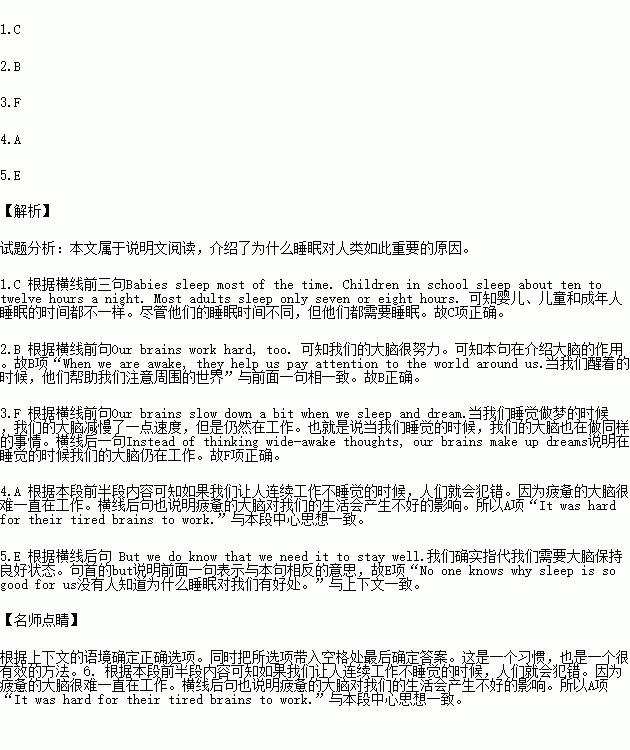题目内容
根据短文内容,从短文后的选项中选出能填入空白处的最佳选项。选项中有两项为多余选项。
Sleep is something we all do. But some people need to sleep more than others. Babies sleep most of the time. Children in school sleep about ten to twelve hours a night. Most adults sleep only seven or eight hours. ___1.___
All parts of our bodies have to rest after they work.. Our arms need a rest after we lift heavy thing, When we run fast, our legs work hard. They get tired. We have to rest them. Our brains work hard, too. ___2.__. We can sit quite still and rest our arms and legs. But our brains aren’t resting. They go right on thinking as long as we are awake.
Our brains slow down a bit when we sleep and dream. ___3.__ Instead of thinking wide-awake thoughts, our brains make up dreams. Some dreams are very pleasing. Some are not. Most of the time we forget them when we wake up.
Scientists have tried to find out what would happen if people were not allowed to sleep. They asked some people not to go to bed. The people stayed up all night and all the next day. They stayed up the next night too, and the day after. They played games, but they made mistakes. They forgot things. ___4.__
The people grew rude and mean. They became angry with their friends. Finally they were too tired to stand up. When they sat down, they fell asleep.
Scientists have found that if people are not allowed to sleep and to dream, they act in an unusual way. __5.__ But we do know that we need it to stay well. So tonight have a good sleep. Lie down under the covers. Shut your eyes. Let your thoughts wander. Soon you’ll stop thinking. You’ll be asleep.
A. It was hard for their tired brains to work.
B. When we are awake, they help us pay attention to the world around us.
C. But babies, children, and adults ---- all of us need to have our sleep.
D. Good sleep helps to improve one’s memory.
E. No one knows why sleep is so good for us.
F. But even as we sleep our brains are doing some work.
G. Of course you will have a good sleep.

